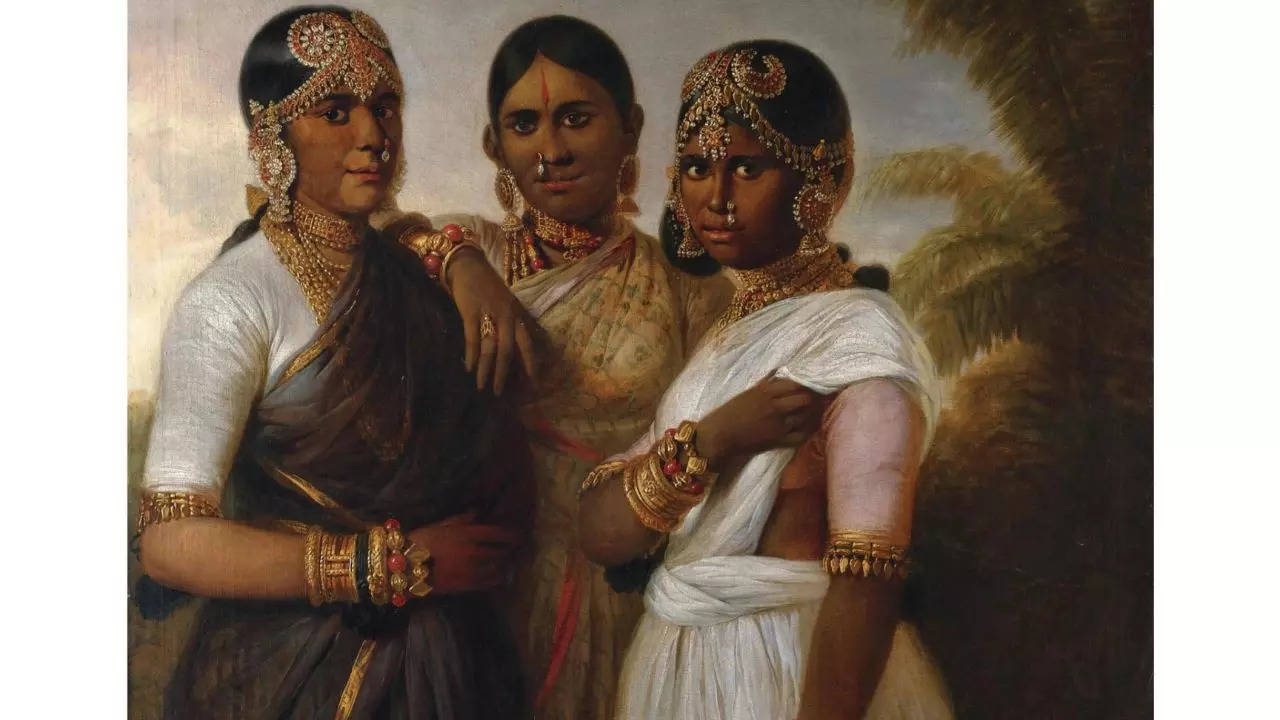The Princess From Mysore Who Became The Face Of The Smallpox Vaccine
During a time when vaccines were unheard of, a princess from Mysore became the face of a campaign to promote a vaccine against smallpox.

The painting by Thomas Hickey. (Photo: Sotheby's)
An eye-catching painting of three women belonging to the royal family from the court of Mysore was painted by Irish painter Thomas Hickey. The oil on canvas painting dates back to 1805 and till date is considered one of his master pieces. But what makes this portrait even more intriguing is that the woman painted on the right was princess Devajammani, the wife of maharaja Krishnaraja Wadiyar III. And, she became the face of the vaccine against smallpox. According a catalogue note by Sotheby's where the painting was up for auction in the year 2007, "The existence of such a rare portrait is explained by the arrival in India at the beginning of the century of the first vaccines against smallpox. Lord William Bentinck, governor of Madras, was anxious to promote its benefits and Mark Wilkes, Resident at the Court of Mysore, was instructed to do all he could to persuade people of its benefits."
This mission was supported by Rami Lakshmi Ammani, queen of the old Wadiyar ruler of Mysore and grandmother of the Raja’s senior queen. As her husband had died of smallpox she was particularly keen to support vaccination. "All this coincided with the betrothal of the young Devajammani, a girl without the dreaded disease, to the young Raja. Her willingness to have the new vaccine was announced in Madras in July 1806. In Hickey’s portrait not only is she shown in a white sari with a beautiful unblemished complexion, but she is holding her sari to present her left arm and the sleeve of her bodice indication where the vaccine would be performed, something which a European doctor could do without compromising the modesty of an Indian woman," mentions the note at Sotheby's.
Trending:
End of Article
Subscribe to our daily Lifestyle Newsletter!
Related News





How To Prevent Acne Breakouts In Summer?

Summer Vacation: Consider These 4 Skill Building Classes For Your Children

5 Paul Aster Fiction Novels That Were Entirely Genre-Defying

Indira Devi Of Cooch Behar: The Maharani Who Bought 100 Ferragamo Shoes

With Heeramandi, Sanjay Leela Bhansali's Love For Extravagant Ethnic Wear Continues









